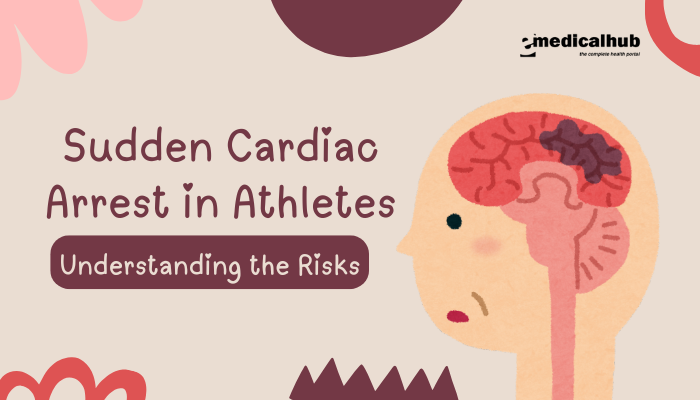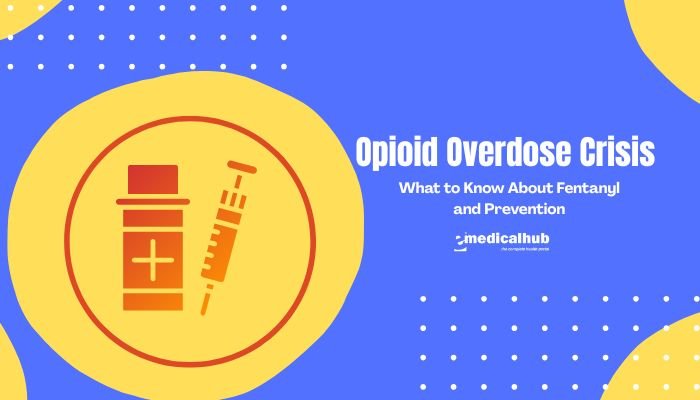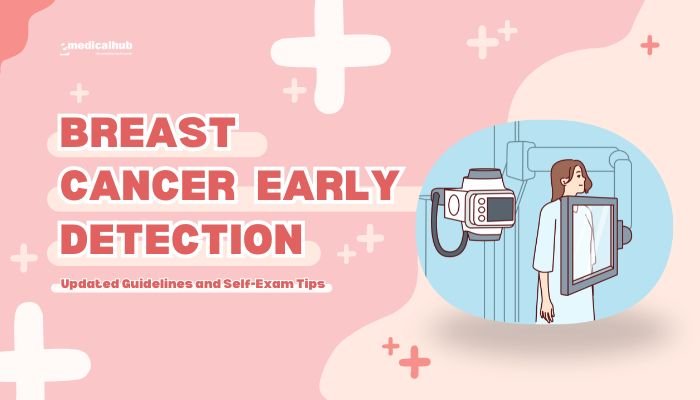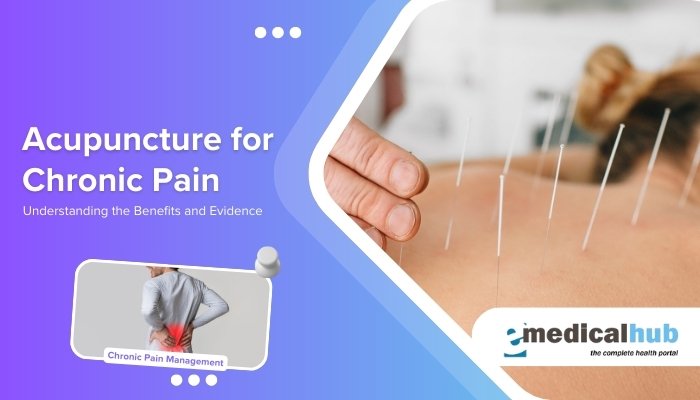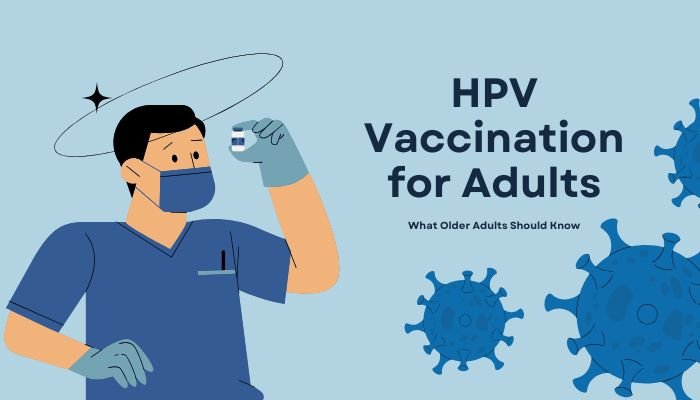Introduction
Sudden cardiac arrest (SCA) is a serious event in which the heart stops beating abruptly. It can lead to death if not treated immediately. Although SCA often happens in older people with known heart problems, athletes also face this risk.
It is alarming when a healthy person collapses on the field or court. Such incidents gain public attention and raise questions about underlying causes, warning signs, and prevention methods.
This article explores sudden cardiac arrest in athletes. It covers key causes, risk factors, screening programs, and ways to help prevent such tragedies. It also discusses the difference between SCA and other heart-related emergencies.
By sharing clear information, the aim is to protect athletes and guide those involved in sports. Readers will find a summary of tips for early detection, safety measures, and emergency responses. Bullet points, numbered lists, and simple text make these details easy to follow.
What Is Sudden Cardiac Arrest?
Sudden cardiac arrest is a loss of heart function caused by a disruption in the heart’s electrical system. In SCA, the heart does not pump blood effectively, and blood flow to the brain and other organs stops almost at once. This situation leads to loss of consciousness and collapse. Without quick care, SCA is often fatal within minutes.
Key Points
- Instant Collapse: The person may fall suddenly and appear lifeless or unresponsive.
- No Effective Heartbeat: The heart quivers irregularly or stops contracting.
- Needs Immediate Action: Cardiopulmonary resuscitation (CPR) and quick defibrillation (if available) are crucial.
SCA vs. Heart Attack
A heart attack (myocardial infarction) happens when a blocked artery restricts blood supply to part of the heart muscle. The heart may continue beating, although in a weakened state. In sudden cardiac arrest, the heart’s electrical signals fail, causing the heart to stop pumping blood completely. A heart attack can sometimes lead to SCA, but the two events are not the same.
Why Does Sudden Cardiac Arrest Occur in Athletes?
Many people view athletes as fit and unlikely to suffer from critical heart events. However, certain hidden conditions can raise the chance of SCA, especially when the heart is placed under extra stress during intense training or competition. These conditions often go unnoticed until a cardiac event occurs.
Common Causes
- Hypertrophic Cardiomyopathy (HCM)
This is a genetic disorder marked by thickened heart muscle walls. The thickening can block blood flow and disrupt normal rhythm. HCM is a leading cause of SCA in young athletes. - Anomalous Coronary Arteries
The coronary arteries supply blood to the heart muscle. In some individuals, these arteries are located in unusual positions or follow abnormal pathways. When an anomalous artery is compressed during exercise, it can trigger a cardiac event. - Arrhythmogenic Right Ventricular Cardiomyopathy (ARVC)
This disorder replaces heart muscle cells in the right ventricle with fatty or fibrous tissue. The structural changes can cause dangerous arrhythmias, especially under stress. - Long QT Syndrome
This is a problem with the heart’s electrical system, prolonging the interval between beats. This can lead to dangerous rhythms like torsades de pointes, which may escalate to SCA. - Myocarditis
Myocarditis is inflammation of the heart muscle, often due to infection. Inflammation can disturb electrical pathways and lead to life-threatening rhythms under the strain of exercise. - Commotio Cordis
A sudden impact to the chest, often by a ball or other object, can disrupt normal electrical activity in the heart at a vulnerable moment in the cycle, leading to SCA. It primarily affects young athletes in sports like baseball or lacrosse.
Less Common Causes
- Aortic Valve Stenosis: Narrowing of the aortic valve increases stress on the heart.
- Wolff-Parkinson-White Syndrome: An extra electrical pathway can trigger rapid heart rhythms.
- Marfan Syndrome: A connective tissue disorder that can affect the aorta and heart valves.
Most athletes with these conditions do not show warning signs until a collapse occurs. That is why screening programs and awareness are essential for early detection.
Incidence and Demographics
Studies show sudden cardiac arrest is the leading cause of death in young athletes on the field. Although it remains relatively rare in absolute terms, each case has a major impact on the community. Incidence estimates vary, but figures suggest about 1 in 50,000 to 1 in 80,000 young athletes may experience SCA per year. The occurrence is higher in male athletes, possibly because of higher intensity sports or genetic factors.
Sports with Notable Risk
- Basketball: Quick bursts of exertion and repeated high-intensity play stress the heart.
- Soccer: Sustained running and physical collisions can unmask heart abnormalities.
- Football: Frequent contact and high-intensity bursts can elevate cardiovascular demands.
- Track and Field: Events like sprinting or long-distance running can place large demands on the heart.
- Baseball/Lacrosse: Risk of commotio cordis from projectile impact.
Certain sports require medical clearance at different levels. Organized leagues sometimes mandate evaluations that include heart checks. Vigilance helps identify hidden risk factors early.
Warning Signs and Symptoms
Many athletes with underlying heart disorders remain symptom-free, especially when at rest. However, some warning signs can appear:
- Chest Pain or Tightness: Especially during or soon after exercise.
- Unexplained Fatigue: A sudden drop in performance or getting tired much sooner than usual.
- Dizziness or Lightheadedness: May occur during exertion or upon stopping exercise.
- Fainting (Syncope): Especially if it happens during or right after intense physical activity.
- Heart Palpitations: A sensation of a racing or irregular heartbeat.
- Shortness of Breath: Beyond normal exercise expectations.
Any athlete who experiences these symptoms should seek medical help. Early evaluation can detect disorders that elevate the risk of cardiac arrest. Subtle signs often appear in training before a major event on the playing field.
Risk Factors
Certain factors add to the possibility of SCA in an athletic context. Identifying and managing these risk factors can save lives.
Family History
A family history of sudden cardiac death under age 50 may point to inherited heart disorders like hypertrophic cardiomyopathy or long QT syndrome. Relatives of any athlete with a known inherited condition should undergo testing and careful observation.
Intensity of Exercise
Heavy training places great stress on the heart. Prolonged intense exercise may accelerate dangerous heart rhythms in individuals with concealed cardiac problems. Adequate rest, balanced training loads, and regular check-ups help manage this risk.
Substance Use
Some athletes use stimulants, performance-enhancing drugs, or energy drinks that raise heart rate or strain the heart’s electrical system. Such substances can worsen an underlying condition or spark arrhythmias, resulting in SCA.
Dehydration and Electrolyte Imbalances
Hydration affects heart function, muscle contractions, and blood circulation. Dehydration or an abnormal electrolyte level can trigger irregular heartbeats. Proper fluid intake and balanced electrolyte levels reduce the likelihood of stress on the heart.
Screening and Evaluation
Screening can catch structural or electrical heart disorders before they result in SCA. While no test is perfect, comprehensive evaluations can detect many high-risk conditions. Experts often include the following components:
- Medical History
- Past episodes of fainting, chest pain, or palpitations
- Family history of heart disease or sudden death
- Physical Exam
- Listening for heart murmurs
- Checking blood pressure in multiple positions
- Observing any signs of connective tissue disorders
- Electrocardiogram (ECG)
- Evaluates the electrical activity of the heart
- May reveal conditions like long QT syndrome, WPW, or conduction delays
- Echocardiogram (Echo)
- Uses ultrasound to show the structure and function of the heart
- Identifies problems like hypertrophic cardiomyopathy, valve disease, or anomalous coronary arteries
- Stress Test
- Monitors heart activity during exercise
- Detects abnormal rhythms or limited blood supply under exertion
- Advanced Imaging
- Cardiac MRI for detailed views of heart muscle
- Helps confirm conditions like ARVC or other structural defects
Cost and Limitations
Some argue that routine screenings for all athletes may be expensive and yield false positives. However, in many regions, preparticipation evaluations have become more common. The benefits of discovering dangerous heart conditions often outweigh these concerns. Younger players especially can benefit from thorough screening, since many sudden deaths occur between 14 and 24 years of age.
Prevention Strategies
Preventing sudden cardiac arrest in athletes involves a multi-layered approach. From the athlete’s standpoint, knowledge of personal and family history is important. On the organizational side, robust screening, oversight, and policies can reduce the risk.
Personal Measures
- Honest Reporting of Symptoms: Young players may hide symptoms for fear of losing playing time. Honesty can save a life.
- Avoiding Harmful Substances: Stimulants, unapproved supplements, or performance-enhancing drugs can put extra strain on the heart.
- Gradual Training Intensities: Building endurance and strength step by step reduces sudden stress on the cardiovascular system.
- Proper Rest and Recovery: Adequate sleep and rest days allow the heart to recover from intense exercise.
- Hydration and Nutrition: Balanced electrolytes and a nutrient-rich diet help the heart function under athletic stress.
Team and Institutional Measures
- Mandatory Preparticipation Examinations: A thorough ECG and echocardiogram can uncover many hidden disorders before sports participation.
- Emergency Plans and Equipment: Coaches, staff, and athletes should know how to respond to SCA. Easy access to automated external defibrillators (AEDs) is essential.
- Regular Check-Ups: Annual or biannual evaluations can catch changes in heart function, especially in young people with evolving bodies.
- Education and Awareness: Training coaches and teachers to see early warning signs or suspicious symptoms can prompt fast medical referrals.
Community-Wide Efforts
Communities can help by funding AED placements in gyms, stadiums, and training centers. Public policies that back heart screenings in schools can also lower the incidence of sudden cardiac arrests in youth sports. By working together, families, sports organizations, and local agencies create a safer environment for all participants.
Importance of Automated External Defibrillators (AEDs)
An AED is a simple, portable device that analyzes heart rhythm and delivers an electric shock if needed. Fast use of an AED can restore a normal heart rhythm after an SCA event. In many cases, time is the difference between life and death. An AED can be operated by a trained layperson, making it a critical tool in community-based heart emergency response.
Why AEDs Matter
- Immediate Response: Each minute after SCA onset lowers survival rates by about 10%. Having AEDs available at sports venues can speed up intervention.
- Easy to Use: Most AEDs use voice or screen prompts that guide users through each step.
- Life-Saving Impact: Research shows that quick defibrillation can dramatically raise the odds of survival.
In some regions, laws require AEDs in schools, stadiums, and community centers. Athletes and coaches should know where the nearest AED is located and how to use it.
First Aid and Emergency Response
Knowing how to respond to SCA can make the difference between recovery and fatality. A well-orchestrated plan is crucial because the first few minutes are vital.
- Identify the Emergency
- Athlete collapses unexpectedly
- No response, no normal breathing
- Call Emergency Services
- Dial local emergency numbers right away
- Provide clear directions to the location
- Begin CPR
- Check for breathing and pulse
- If absent, start chest compressions at a rate of about 100–120 per minute
- Allow full chest recoil after each compression`
- Use an AED (If Available
- Turn on the device and follow prompts
- If advised, deliver a shock
- Continue CPR until help arrives or the person shows signs of life
- Stay Calm and Organized
- Clear the area
- Assign someone to guide paramedics upon arrival
- Keep track of how many cycles of CPR were performed
Immediate chest compressions pump limited blood to the brain, buying time until defibrillation or advanced medical help. Even after a shock, continue CPR until the heart resumes effective beats or emergency professionals take over.
Training and Education
Athletes, coaches, parents, and event staff can learn basic life support skills. Immediate bystander intervention doubles or triples the chance of survival. Certain steps can raise the level of preparedness:
- CPR Classes: Schools, clubs, and sports associations can offer short courses.
- AED Training: Hands-on demos help participants feel comfortable using the device under stress.
- Annual Drills: Practice scenarios teach people to respond quickly to a collapsed player on the field.
- Team Safety Officers: Appoint a coach or staff member to oversee first-aid kits, emergency numbers, and readiness plans.
A short quote from a sports health professional sums it up: “When an athlete collapses from sudden cardiac arrest, every second matters. Early detection is vital.”
Return-to-Play Considerations
Recovery from a cardiac event is a delicate process. Athletes need thorough evaluation before returning to training or competition. The steps often include:
- Cardiac Tests
- A follow-up ECG, echocardiogram, or MRI can assess whether the heart has healed or if structural or electrical risks remain.
- Medication Adjustment
- Some conditions require long-term medication. Beta-blockers, for example, can control dangerous rhythms.
- Lifestyle Changes
- Specific dietary plans, stress reduction, and a limit on intense training may be necessary.
- Gradual Re-Introduction
- Slowly increasing exercise intensity helps the body adapt again. Regular check-ups measure progress and detect early warning signs.
- Ongoing Monitoring
- Yearly or biannual evaluations ensure stability of any known heart condition.
Returning too soon can lead to another episode, placing the athlete at serious risk. Medical clearance protects the individual, team, and organization.
Role of Sports Organizations and Governing Bodies
Professional leagues, amateur clubs, and school sports programs all share responsibility for athlete safety. Governing bodies can set rules that create safer conditions:
- Preparticipation Requirements: Mandating health screenings and medical clearances before competition.
- Equipment Standards: Requiring chest protection in sports prone to commotio cordis.
- Emergency Protocols: Recommending or requiring AEDs at all official events.
- Coach Education: Providing training materials on CPR and recognition of cardiac symptoms.
- Data Collection: Encouraging detailed reporting of any SCA incidents to inform research and improve preventive strategies.
Public awareness of sudden cardiac arrest risk has encouraged more structured screening programs. Some regions use large-scale ECG-based screening for young athletes. Critics argue about false positives or cost, but many find that this approach is worth it to save lives.
Emotional and Psychological Effects
A sudden cardiac event can cause emotional stress not just for the affected individual, but also for teammates, coaches, and family members. Witnessing a collapse on the field can produce anxiety and fear in those involved.
Potential Emotional Responses
- Shock and Fear: Observers may feel helpless or terrified by the event.
- Worry About Personal Health: Teammates may question their own safety, leading to concerns over undiagnosed heart issues.
- Stress for Coaches: Fear of liability, guilt, or pressure to maintain safer training routines.
Coping Methods
- Counseling: Talking to mental health professionals can help participants process the incident.
- Team Discussions: Group debriefings can address questions and concerns.
- Support Groups: Families affected by SCA can share experiences with others who understand their situation.
Empathy and clear communication help the healing process. Encouraging open dialogue keeps trust intact within sports communities.
Table: Key Differences Between Heart Attack, Cardiac Arrest, and Stroke
| Feature | Heart Attack (Myocardial Infarction) | Sudden Cardiac Arrest (SCA) | Stroke |
| Primary Cause | Blockage in an artery supplying the heart muscle | Electrical malfunction in the heart leading to no effective beat | Blocked (ischemic) or burst (hemorrhagic) blood vessel in the brain |
| Main Symptom | Chest pain, pressure, or discomfort | Sudden collapse, no pulse, loss of consciousness | Sudden numbness, confusion, or difficulty speaking or walking |
| Immediate Intervention | Emergency care to restore blood flow, possibly stenting | CPR and defibrillation to restart normal heartbeat | Rapid clot-busting medication (ischemic) or surgical intervention |
| Long-Term Effects | Can weaken heart muscle if not treated quickly | Fatal if untreated within minutes | Can cause lasting disability, depending on brain area affected |
| Overlap | Can lead to SCA if arrhythmias occur | May be triggered by a heart attack, but not always | Risk factors include hypertension and atherosclerosis, similar to heart issues |
Real-Life Stories and Lessons
- High School Basketball Player
A 16-year-old collapsed mid-game. Coaches quickly used an AED. He recovered fully, revealing a previously undiagnosed HCM. School policy changes followed, ensuring yearly ECG checks. - Professional Soccer Athlete
A known star collapsed during a televised match. The team’s medical staff performed CPR and used a defibrillator. Diagnosis: arrhythmia from a congenital condition. He chose to retire, emphasizing the importance of periodic checks even at the top level. - College Swimmer with Myocarditis
Repeated minor infections masked the underlying heart inflammation. During an intense practice, she fainted. Quick intervention saved her life, and thorough rest treated the root cause. Her story taught teammates about the danger of training while ill.
These examples show how early response and knowledge of risk factors can prevent death and reduce complications.
Research and Technological Advancements
New research focuses on refining screening, improving return-to-play guidelines, and understanding the genetic basis of heart disorders in athletes. Key areas include:
- Genetic Testing: In families with a known pattern of heart conditions, genetic screens can detect carriers before symptoms appear.
- Wearable Devices: Smartwatches or heart rate trackers can alert athletes to abnormal rhythms. Some devices include ECG features, giving early warnings of potential problems.
- Artificial Intelligence: Machine learning can analyze ECG data to predict hidden heart risks. This approach may cut false positives and guide more precise follow-ups.
- Telehealth: Remote consultations and digital platforms allow quick sharing of ECG results or echocardiogram images with specialists. Athletes in remote areas benefit from expert advice.
Sports organizations watch these breakthroughs to decide if they can be integrated into routine player assessments. Early adoption of effective methods might significantly lower the incidence of SCA.
The Path Forward: Collaboration and Awareness
Sudden cardiac arrest in athletes is a complex challenge that needs joint action. By educating youth, training coaches, equipping venues with AEDs, and fine-tuning screening approaches, the sports world can reduce tragedies. Collaboration between healthcare providers, sports bodies, and communities fosters better heart health outcomes for athletes.
Action Points
- Encourage Transparency: Athletes should share any heart-related symptoms or family histories with medical staff.
- Push for Regular Screening: Thorough cardiac evaluations at the start of each season, especially for high-intensity sports.
- Standardize Emergency Drills: Ensure every facility has clear steps to handle SCA, along with easily accessible AEDs.
- Keep Learning: Stay updated on research, and integrate new screening technologies as they become reliable.
- Promote Healthy Lifestyles: Balanced diets, adequate rest, stress management, and avoidance of risky substances can protect the heart.
With these measures, we can look forward to fewer sudden cardiac arrest incidents and safer sports environments. Athletes can continue to enjoy competition, knowing that strong safeguards are in place.
Conclusion
Sudden cardiac arrest in athletes is a life-threatening event that can strike without obvious warning. Hidden heart disorders, intense physical demands, and other triggers create a unique risk profile for sports participants. Although the overall occurrence is uncommon, the outcome can be tragic when it does happen.
Understanding the primary causes of SCA, such as hypertrophic cardiomyopathy or anomalous coronary arteries, is central to developing better screening. Standard checks using ECG and echocardiograms, along with a detailed health history, can reveal many hazards. A safe sports setting also involves prompt emergency response. Coaches, teammates, and spectators must know how to perform CPR and use AEDs.
Efforts to prevent sudden cardiac arrest begin with awareness and education. From family histories to annual medical evaluations, attention to detail can make the difference between life and death. Athletes, parents, and sports administrators can work together to reduce risks while supporting the goal of athletic excellence. By embracing effective screening, immediate response strategies, and ongoing research, the sports community can protect its players, allowing them to pursue their passion with confidence.
References
- Maron BJ, Thompson PD, Puffer JC, et al. Cardiovascular preparticipation screening of competitive athletes. Circulation. 1996;94(4):850-6.
- Harmon KG, Asif IM, Maleszewski JJ, et al. Incidence and etiology of sudden cardiac arrest in high school athletes in the United States. Mayo Clin Proc. 2016;91(11):1493-502.
- Drezner JA, O’Connor FG, Harmon KG, et al. AMSSM position statement on cardiovascular preparticipation screening in athletes. Br J Sports Med. 2017;51(3):74-85.
- Corrado D, Basso C, Schiavon M, et al. Screening for hypertrophic cardiomyopathy in young athletes. N Engl J Med. 1998;339(6):364-9.
- Van Brabandt H, Desomer A, Gerkens S, et al. Harms and benefits of screening young people to prevent sudden cardiac death. BMJ. 2016;353:i1156.
- Myerburg RJ, Vetter VL. Electrocardiograms in athletes. J Am Coll Cardiol. 2013;62(14):1196-7.
- Drezner JA, Malhotra A, et al. Practical ways to improve sudden cardiac arrest survival in athletes. Sports Med. 2018;48(Suppl 1):51-63.
- Maron BJ, Doerer JJ, Haas TS, et al. Sudden deaths in young competitive athletes. Circulation. 2009;119(8):1085-92.
- Harmon KG, Drezner JA, Wilson MG, et al. Incidence of sudden cardiac death in athletes. Br J Sports Med. 2014;48(15):1185-92.
- Wheeler MT, Heidenreich PA, Froelicher VF, et al. Cost-effectiveness of preparticipation screening for prevention of sudden cardiac death in young athletes. Ann Intern Med. 2010;152(5):276-86.
- Maron BJ, Shirani J, Poliac LC, et al. Sudden cardiac death in young competitive athletes. JAMA. 1996;276(3):199-204.
- Link MS. Mechanisms of sudden cardiac death in the athlete. Cardiol Clin. 2002;20(3):283-302.

